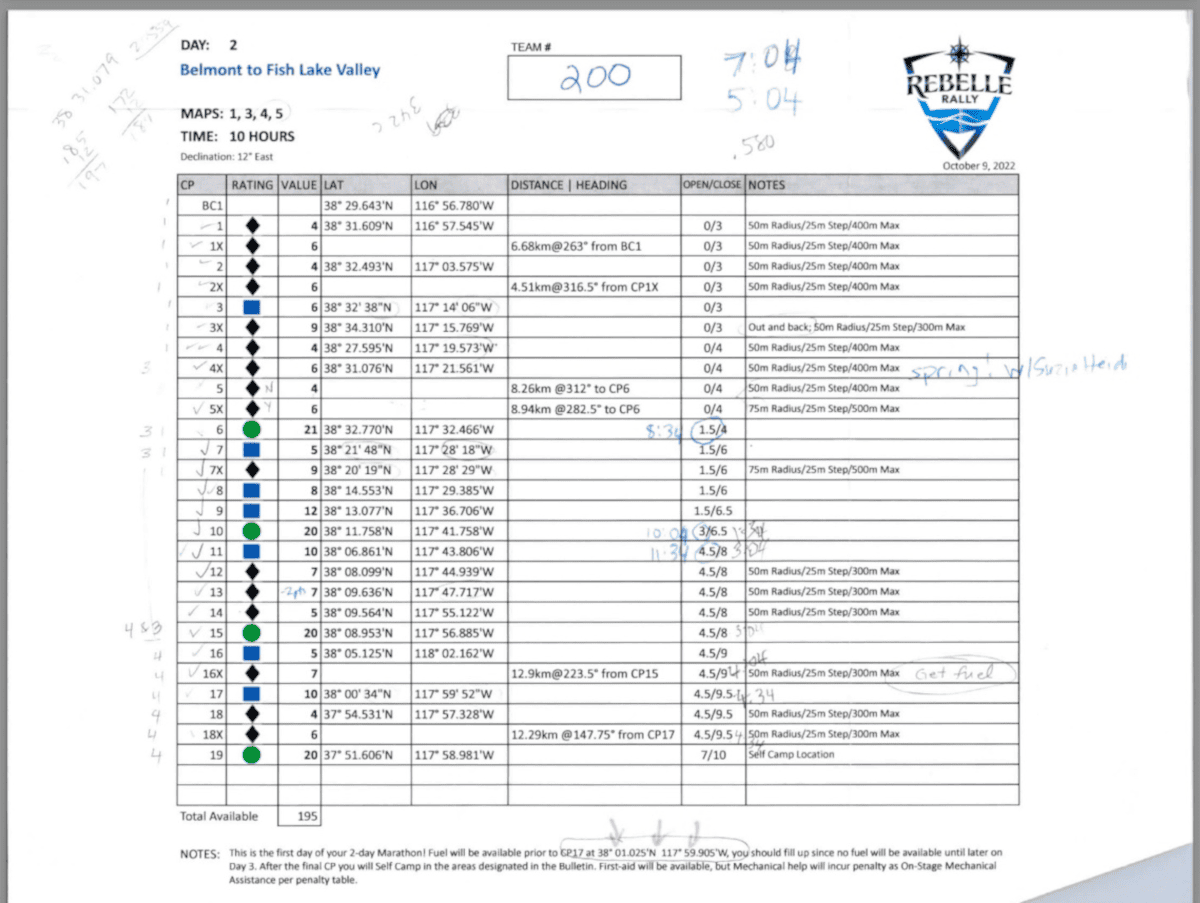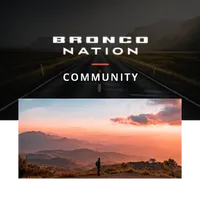It’s time for the 2023 Rebelle Rally! The rally, Oct. 12-21, is an amazing competition, but unfortunately, it is not a spectator sport, meaning that you can’t drive out on course like you can for many other events to watch and cheer for teams throughout the adventure. That being said, there are several ways to stay in touch with what’s going on. Even though I’ve always participated and never tried to follow the event, I’d like to provide a guide on ways you can. I feel like if you understand a little of the strategy of this game and how it is scored, it makes the following of it so much more interesting. It’s like football; you can see the score and know who wins, or you can deep-dive into why a “prevent” defense never works and why your team lost.
Read: Ford Announces Its Five Teams Running in Rebelle
What Is the Rebelle Rally?
The Rebelle Rally is an eight-day navigational rally and is not a race for speed. There is a driver, a navigator, and an off-road vehicle as a team, and the goal is to score the most points possible by Day 8. Points are earned in a couple of ways. The first is by finding checkpoints and the second is by enduro challenges. In 2022, the maximum points you could earn was 1,549. The winning team earned 1,447 or 93% of the total points.
Finding Checkpoints
Every morning, at approximately 5:00am, teams are issued a checkpoint guide (CP guide), which averages about 25 points. There are usually three different guides each morning, and this is done to keep teams from simply following other teams. The CP guide has key information that the team will use to plot the location of each checkpoint on paper maps that are issued by the Rally. The guide may provide a latitude/longitude location, or it may reference a heading and a distance from another checkpoint.

There are green, blue, and black checkpoints: the greens have a large flag and are mandatory in order to score, the blues have a smaller flag or pole, and the blacks have no physical marker. Both the blue and the black checkpoints are optional to the team. Checkpoints must be scored in numerical order, unless specifically told otherwise. Each team is issued a device called a Yellow Brick tracker. This is the actual scoring device, and when a team reaches a checkpoint, they will activate the tracker and it will verify the position and give a score or a penalty. Not every blue flag in the desert belongs to every team; it is possible to click on the wrong one, and since the blacks have no physical markers, it is very realistic that a point could be missed by several kilometers. (Oh yes, the whole rally is in metric). Both of those result in a 10-point penalty.
Scoring a Black Diamond

If you look at the example CP guide, you will see that the black diamonds have radius, step, and max information on the right side of the row. The radius would be the bull’s eye. If you activate your tracker within that radius, you receive full points –– let’s say that number is 5. The step is the subsequent radius markers on the virtual bull’s eye. If the tracker is clicked in each outer ring, one point is subtracted until zero is reached. So, 4 points would be in the first step, 3 in the second and so on. The Max is the outermost area where the tracker can be activated and still get a 0 score. Outside of the Max, a team receives a Wide Miss penalty, which is a -10 points. Chasing a black checkpoint can be stressful, but even though they are worth less points, if you don’t get them, you can’t win.
Enduro Challenges
These can be a time, speed, distance (TSD) or a precision enduro. At the same time a team receives their CP guide in the morning, they will typically also be issued a roadbook(s). If it is a TSD, the book will be missing one piece of data, typically the time, and the team must calculate it. See the photo below.

You will see diagrams, a speed, and a distance. There are several timing controls on the enduro course, and scoring is based on how close you achieve that key time. However, you have no idea where those timing controls will be.
Each competition day is typically between 10-12 hours, and each checkpoint has an opening and a closing time, so time management is critical. Once the end of day is reached, the teams take care of their car, set up their own camp, eat and sleep, and then do it again, all for 8 days. The first day of the event is called Day 0 and is a practice day with zero points awarded. Then there are Days 1-7 of competition, finishing up in the Imperial Sand Dune. Here’s what a scoring day looks like and what standings look like.

The Classes
There are 2 classes, the 4x4 class and the X-Cross class, defined by the presence or absence of a transfer case. There are also designations, such as Bone Stock or Electrified, but they still fall into one of the two classes.
The Strategy
Each day requires a strategy and not all teams are successful. Key pieces of strategy are “not getting lost,” good time management, knowing when to abandon looking for a checkpoint, and making as few mistakes as possible. All of this seems to make sense, but teams get lost every day; they literally go the wrong way. They create what’s called “map magic” and convince themselves they know where they are because a map feature “looks” like the topography of where they are.

There are also times when you need to stop looking for a checkpoint. If you spend too much time looking for a black diamond, it can impact the timing for the rest of your day and may cause you to time out of easier checkpoints down the course.
How to Watch Your Favorite Teams
First, find out your team number. All of the teams in the 4x4 class start with a 1, for example 150 (Shelby Hall and Rori Lewis). All of the teams in the X-Cross class start with a 2, like my team, 200. The 2023 Bios are on the Rebelle website, where you can find the number for your team or teams.
Also, on Rebelle Rally, there is a Live tab across the top of the homepage. Click on it to see a dropdown with Live Tracking, Live Scoring, and Live Standings. If you’re checking in from time to time during the event and have a couple minutes, the Live Tracking area is really cool. It’s basically a virtual view of the course and you can find your favorite team on the map and see how they are doing/scoring. You can also download the YB tracker app to your phone. There’s a brief video on it here.
The live scoring and standings are also available; just be aware that these scores often change later, and standings can change multiple times per day based on the team’s start times. There may be a penalty that later is removed. There is also a schedule of the Live Show, where coverage and recaps will happen. This is mostly interviews and commentary, not much action from the actual course.
I know many of you will be tuned in and following the action. I also know that several of you ladies have considered it, maybe in just a joking way but, if it’s something that you’d like to do someday or if you want to learn more about it, please comment below, and let’s see you on the course in 2024! Registration for 2024 opens in October!

Comments
You must log in or register to post here.